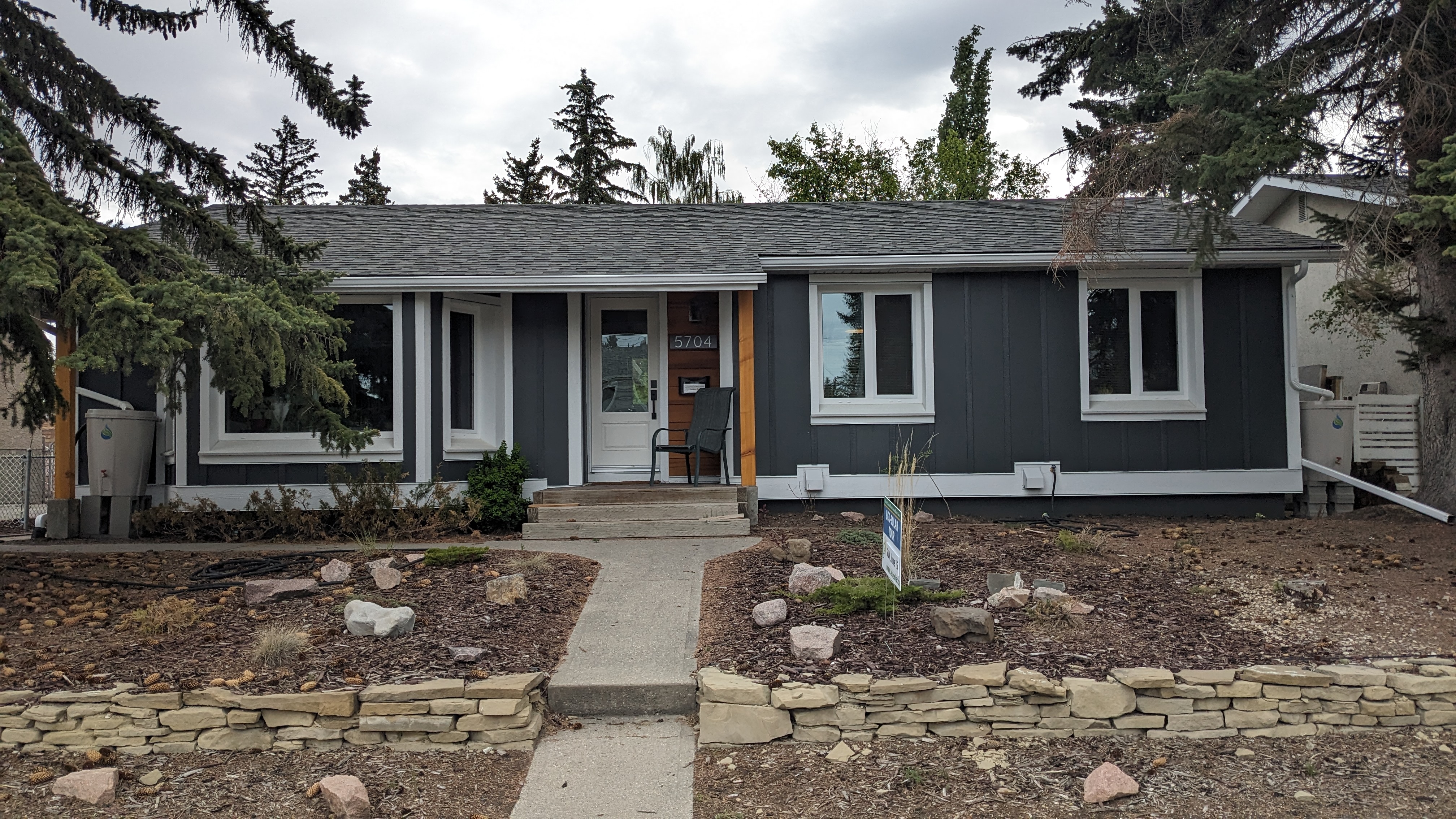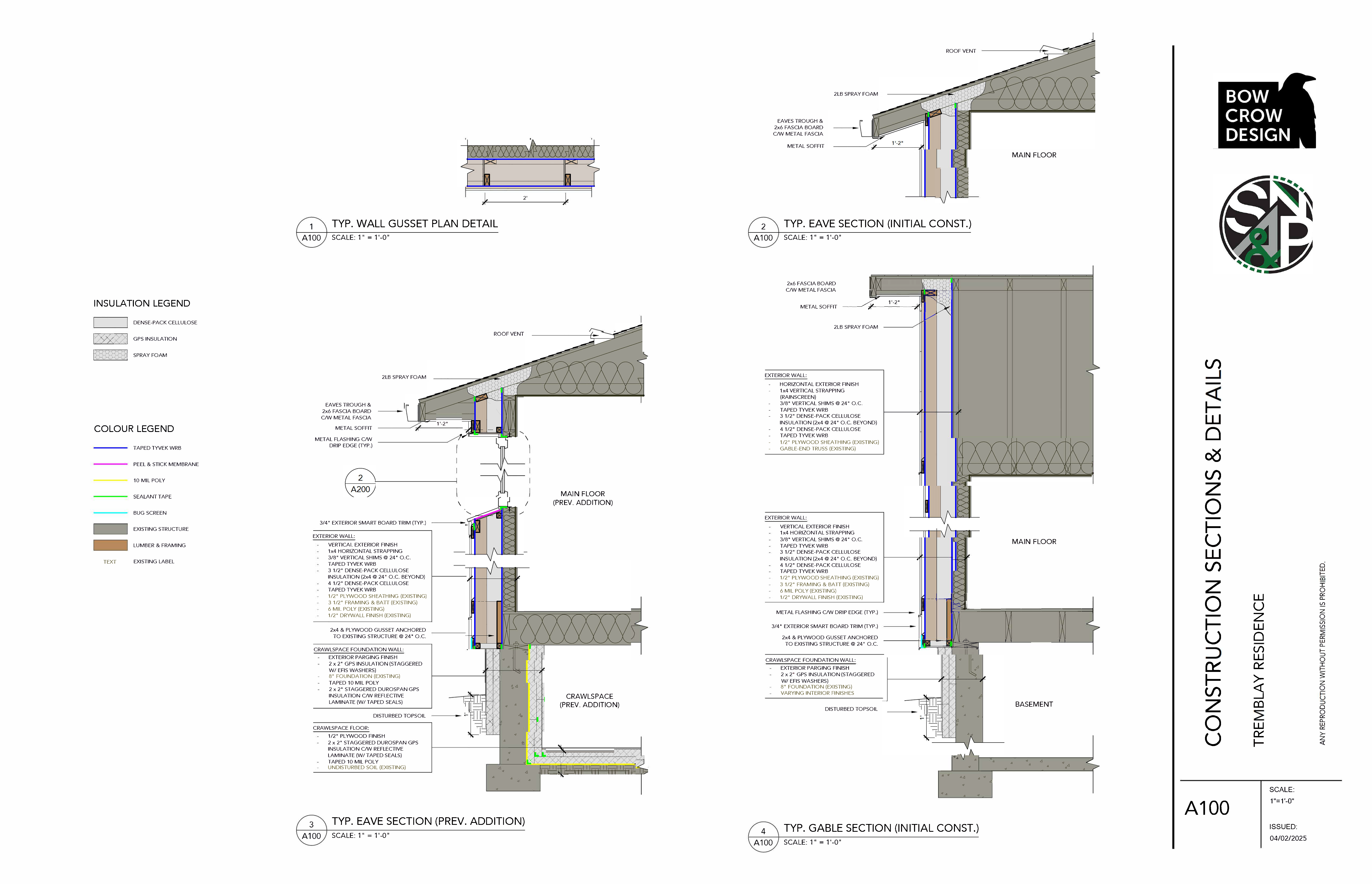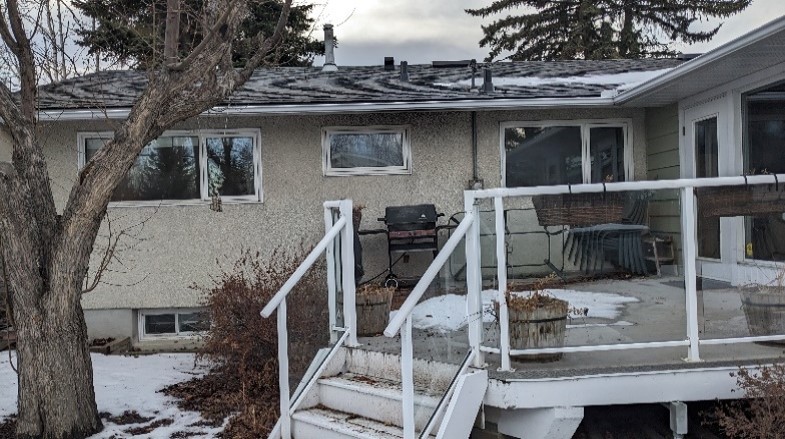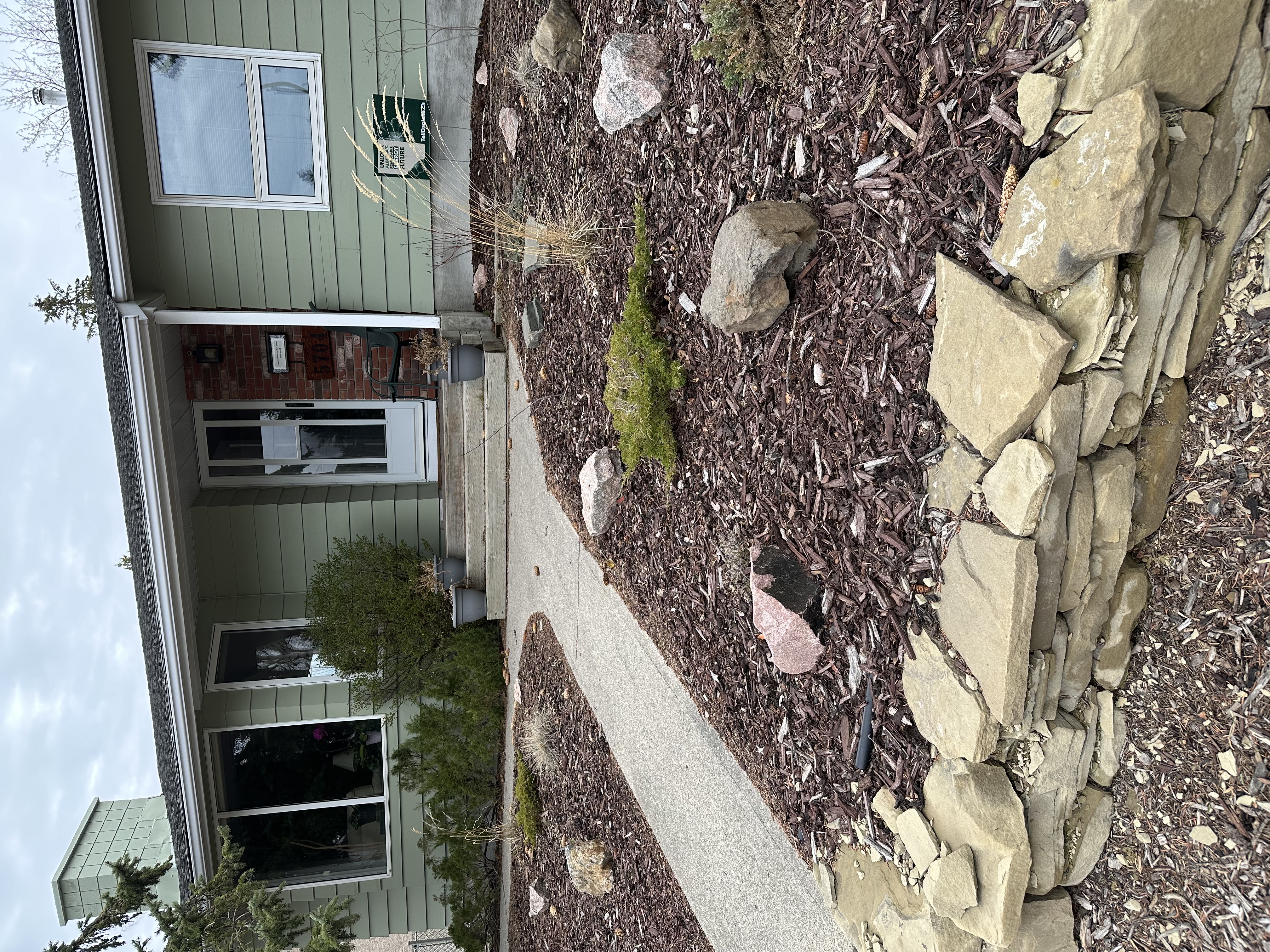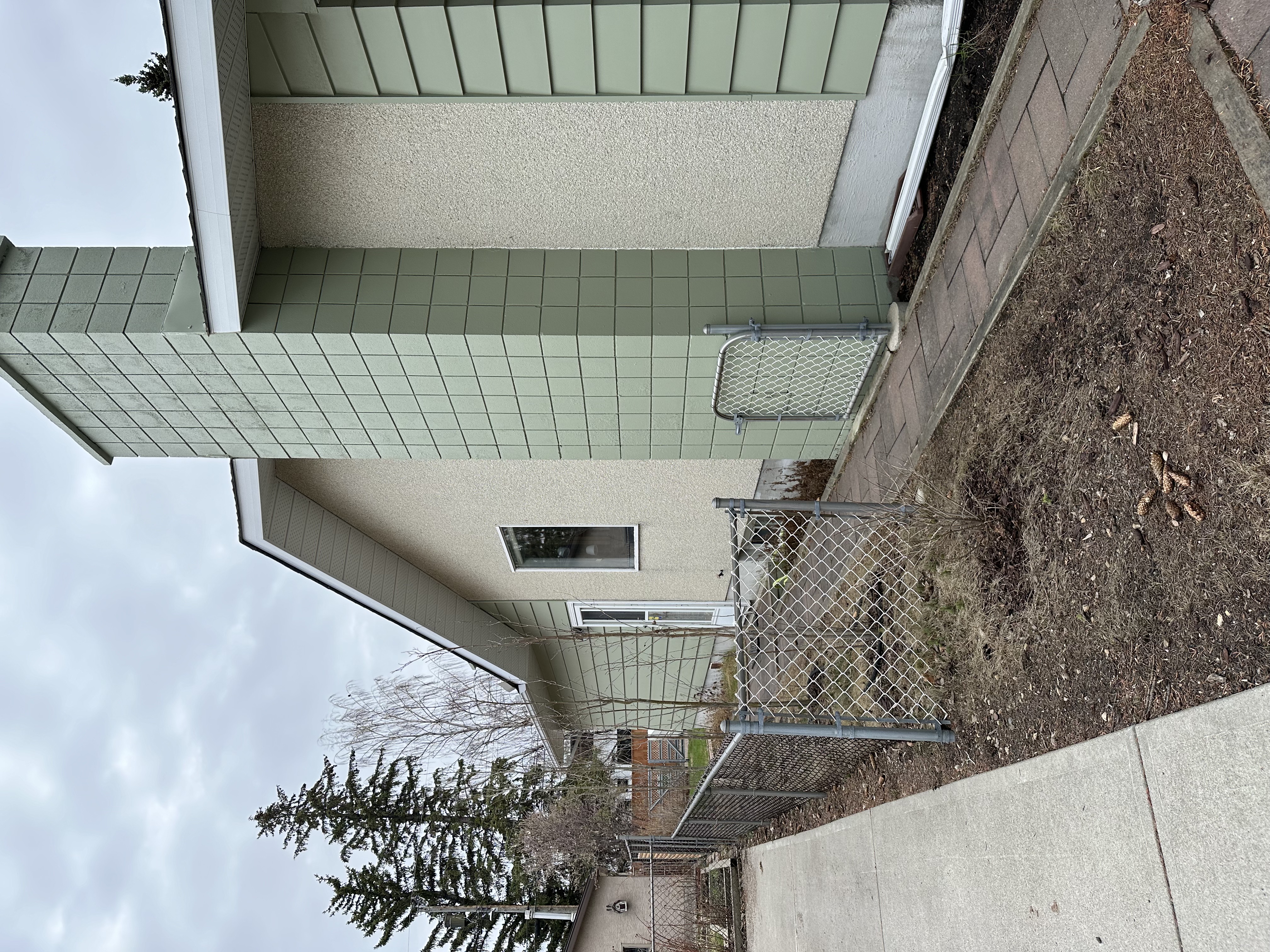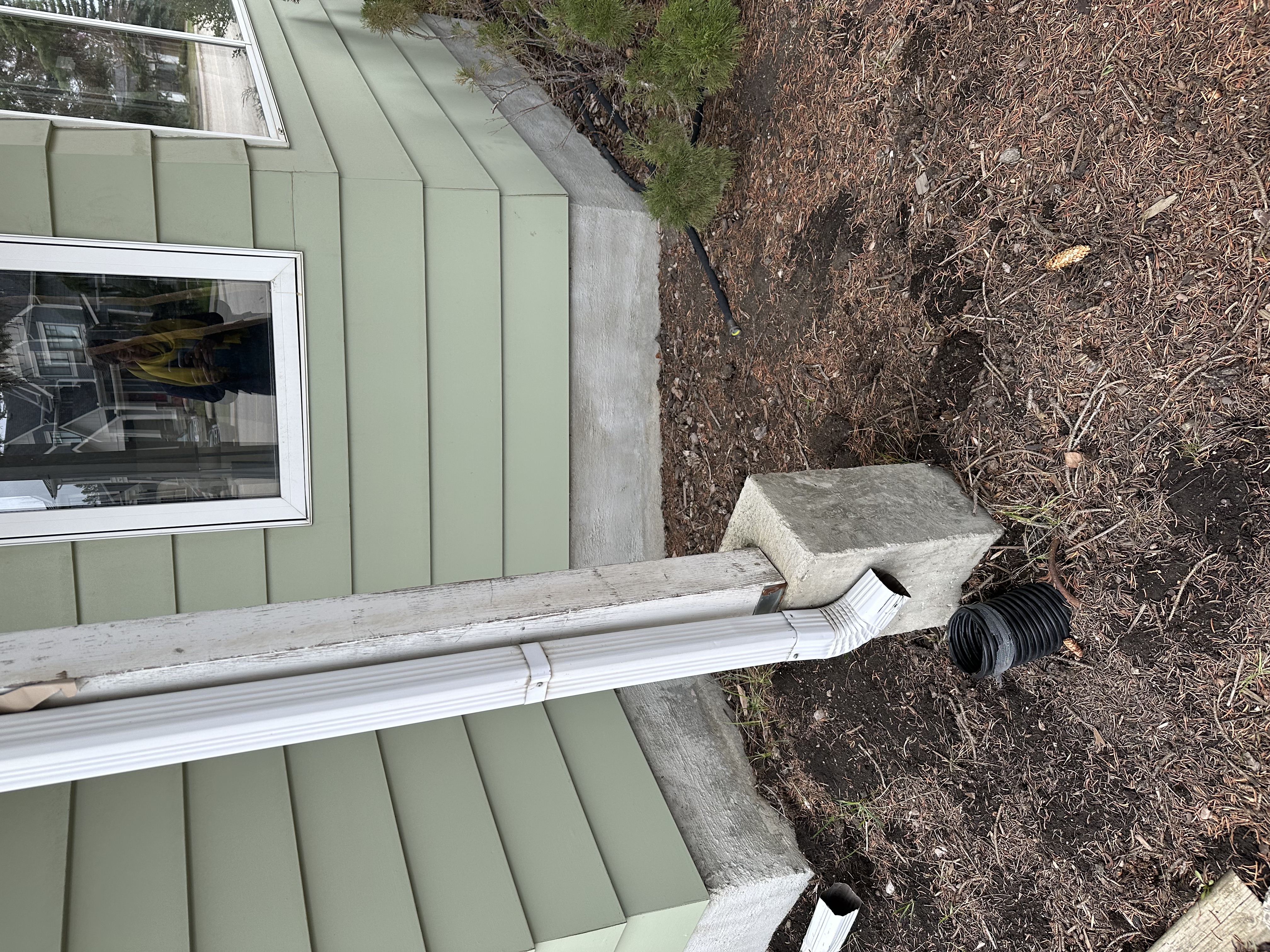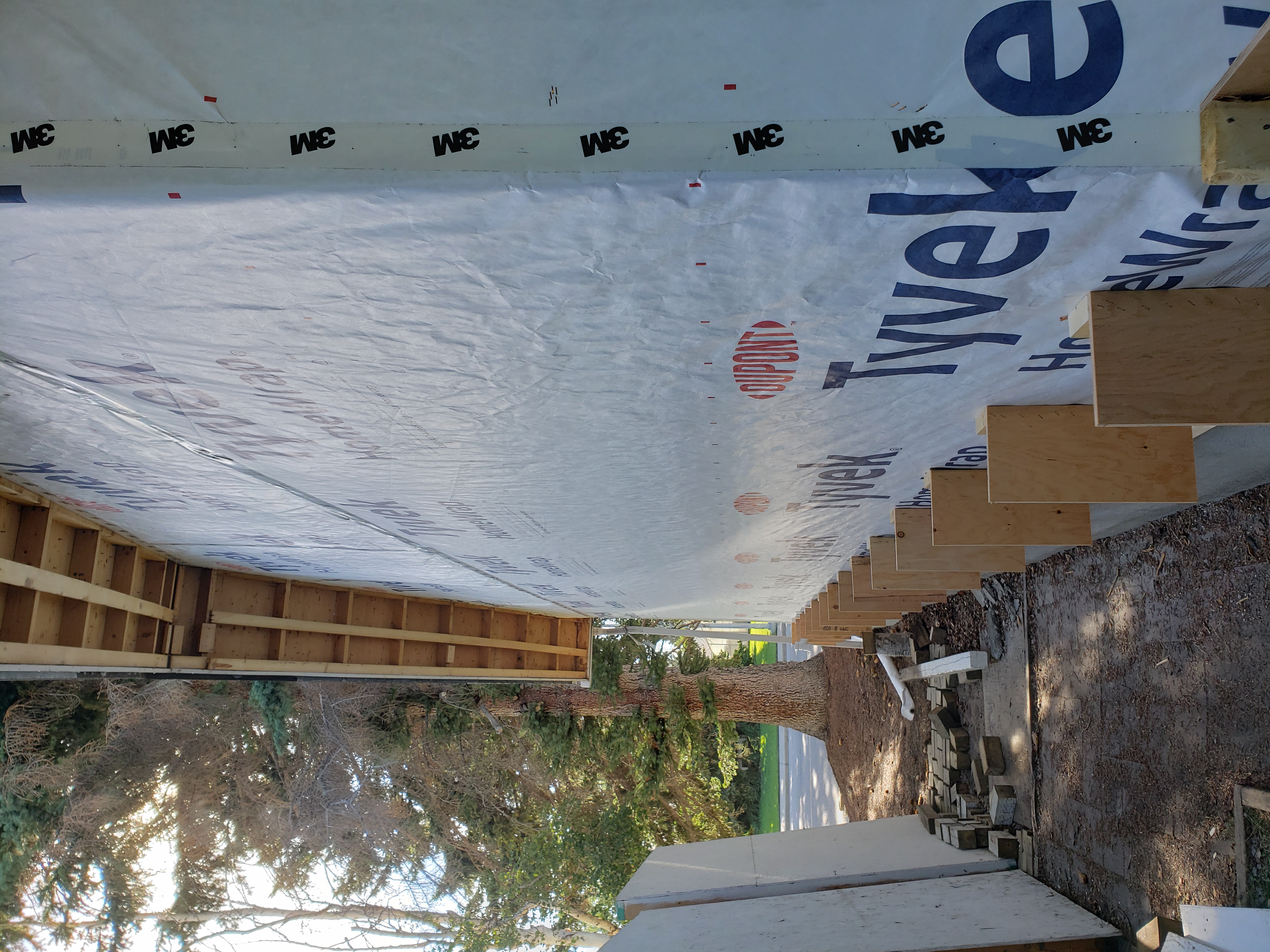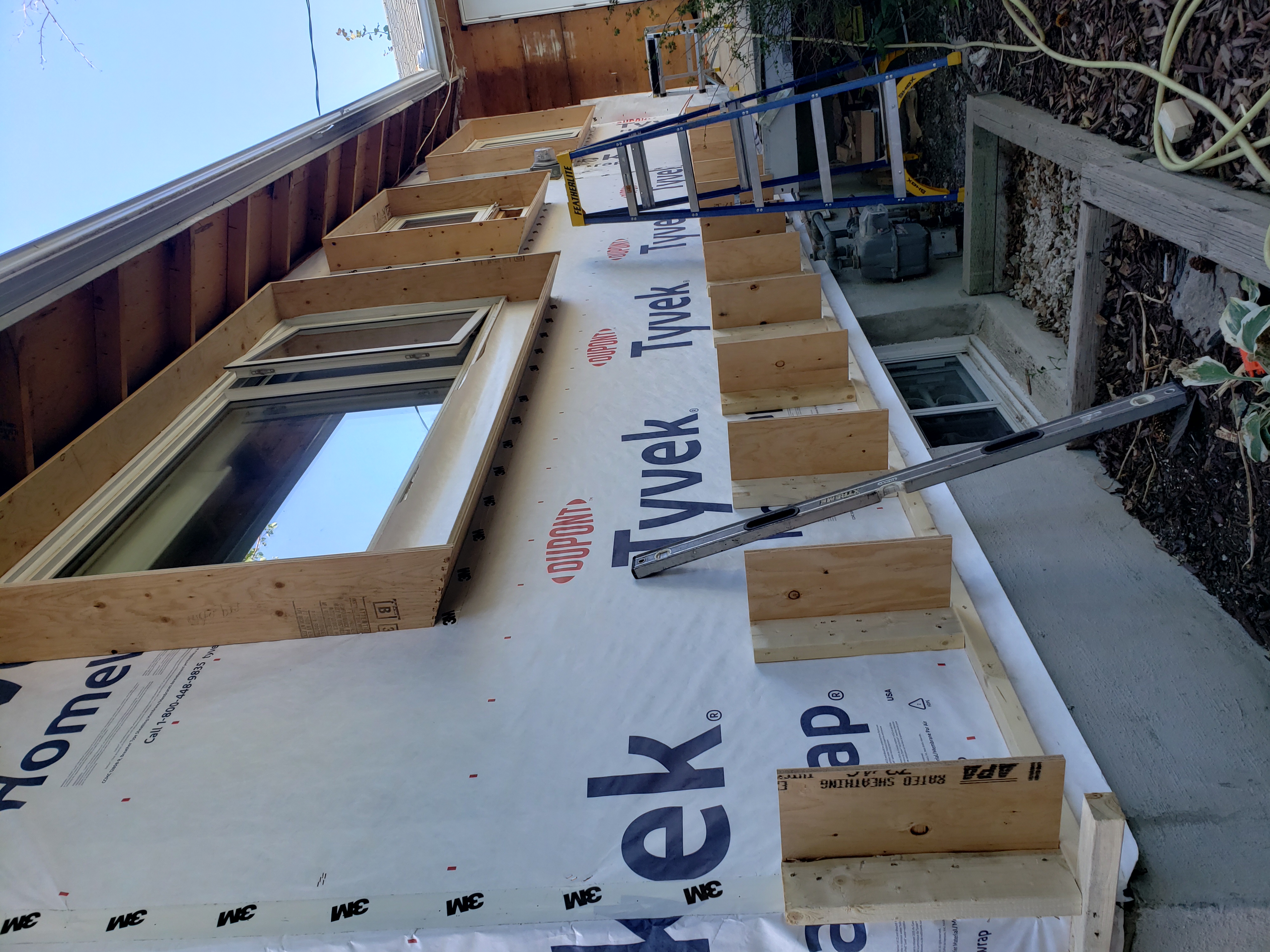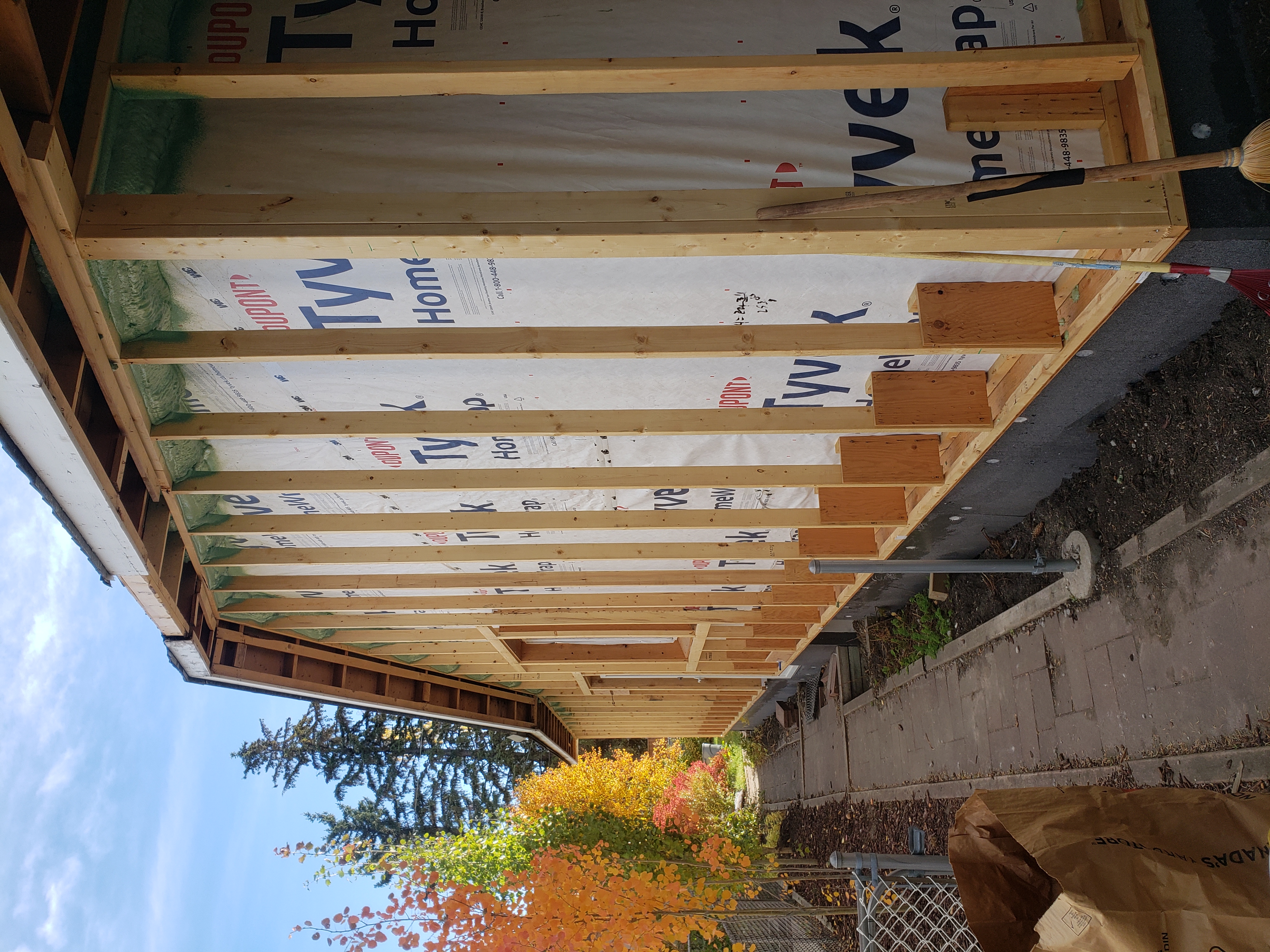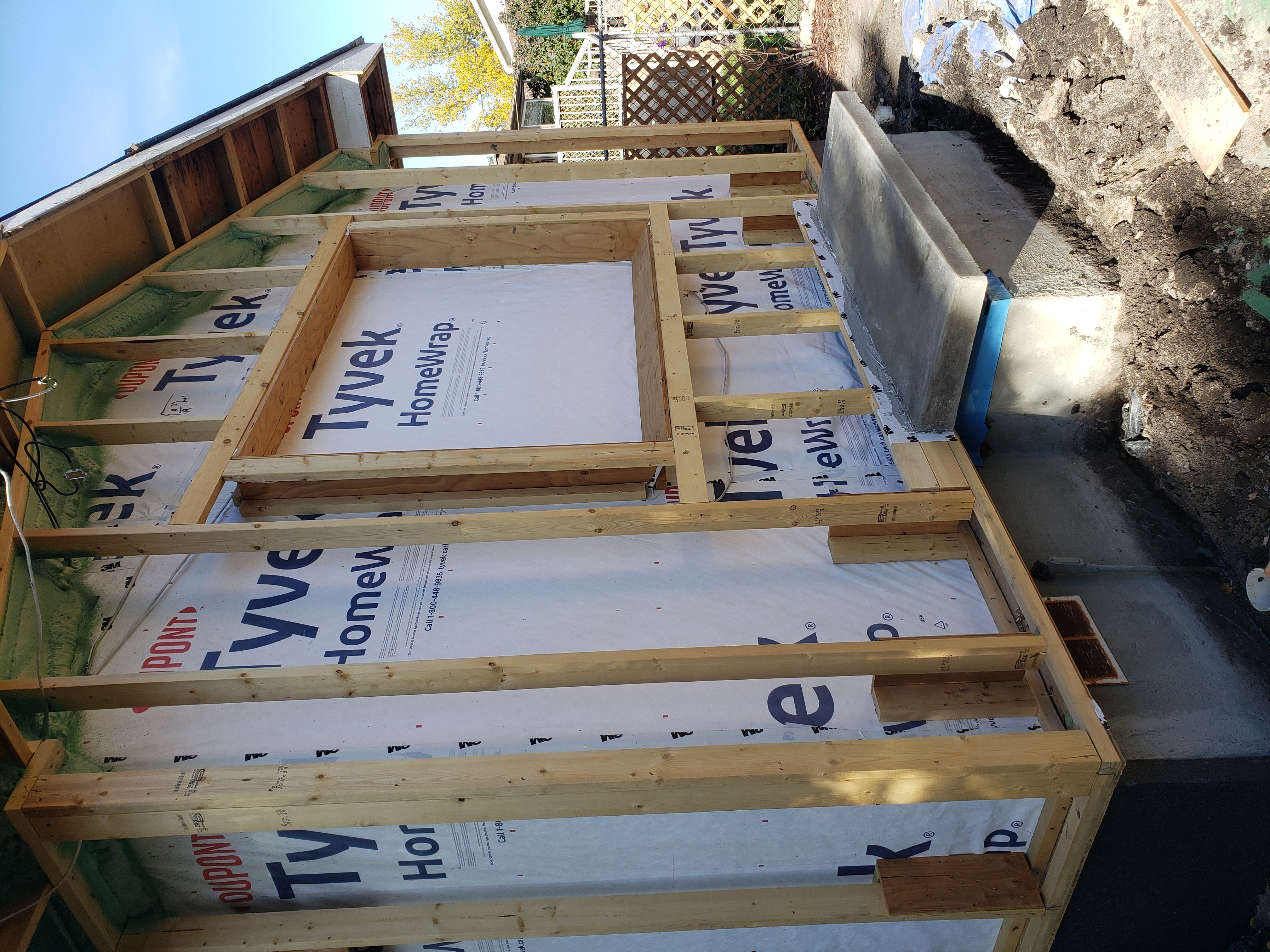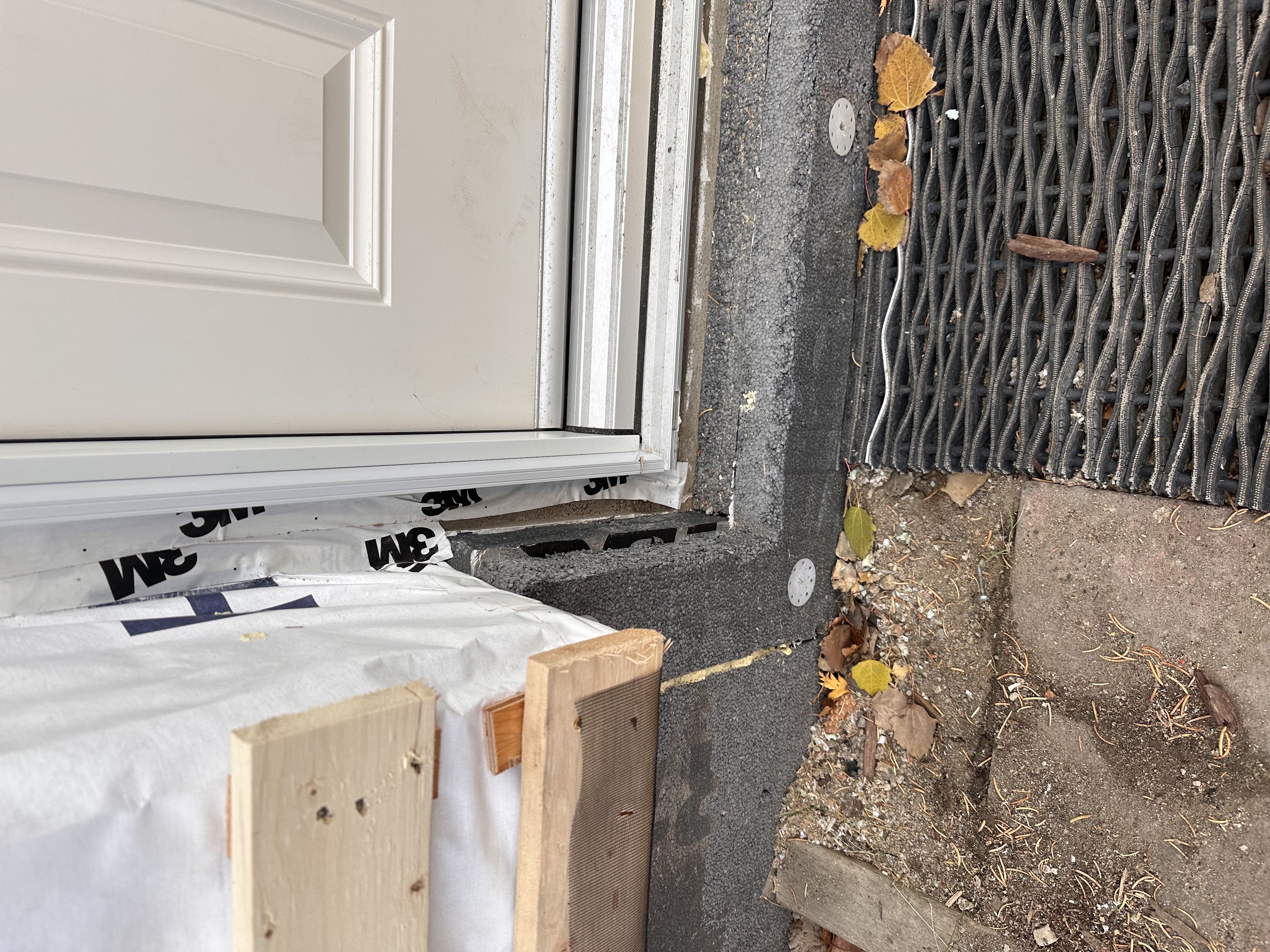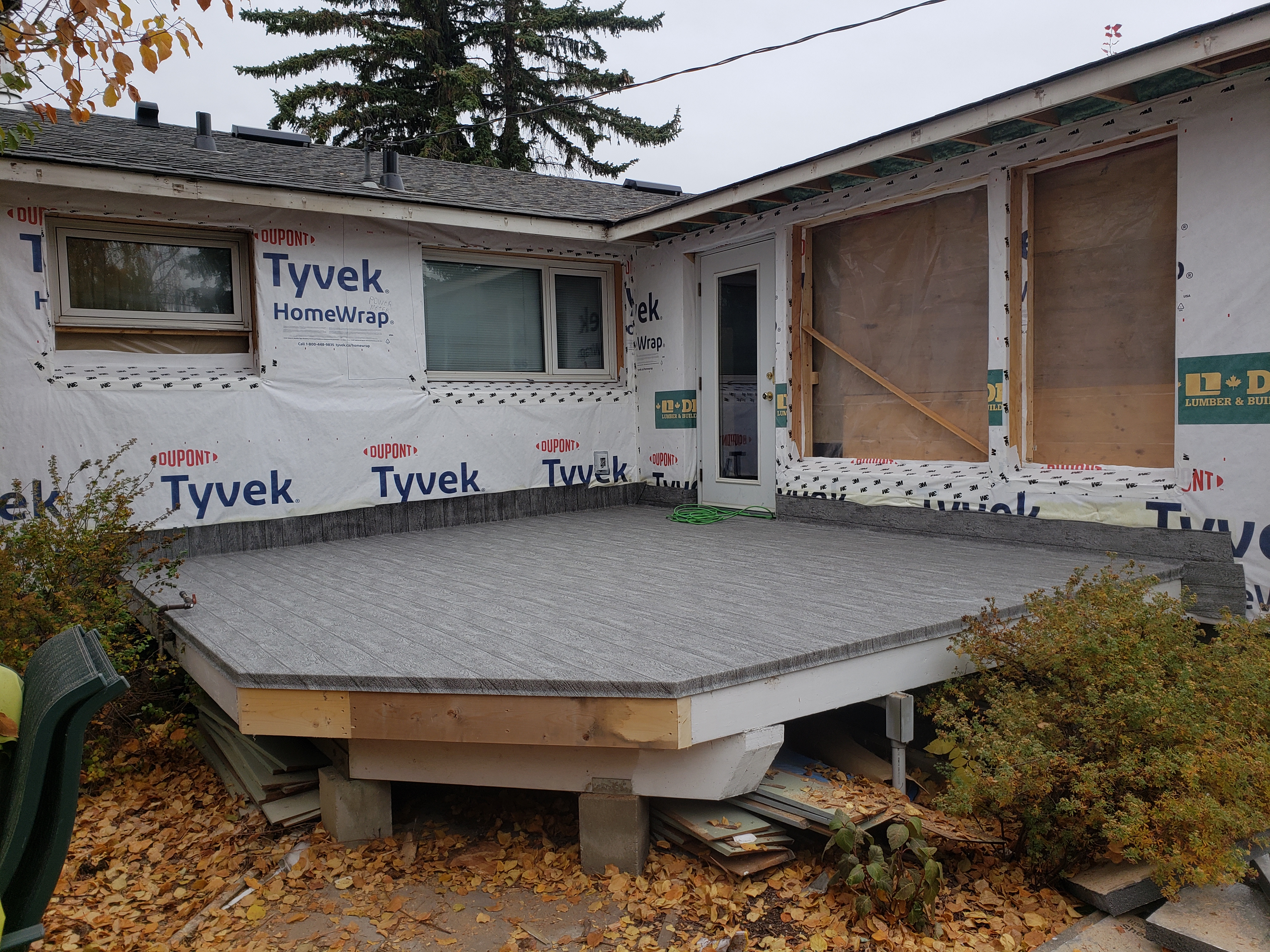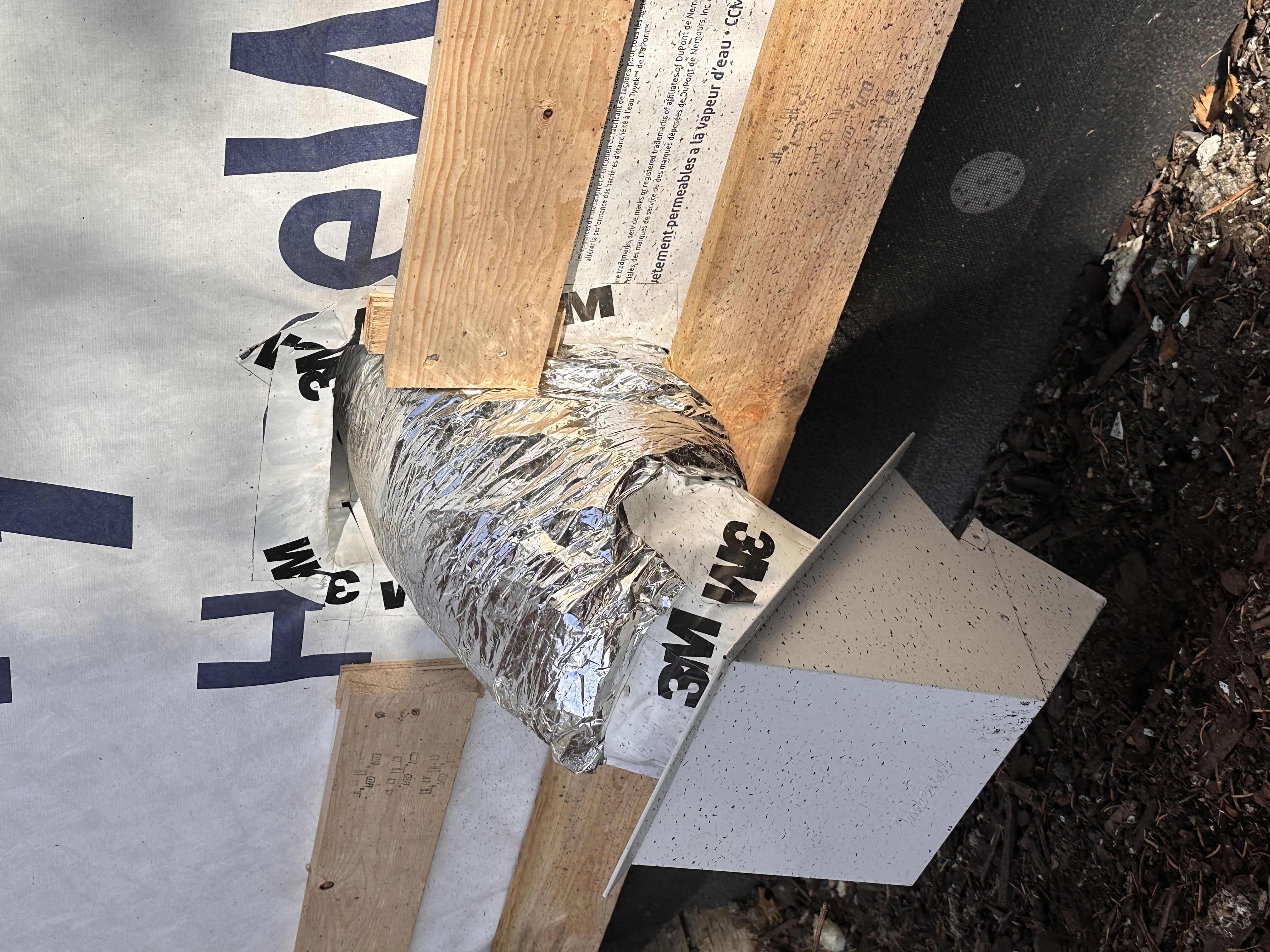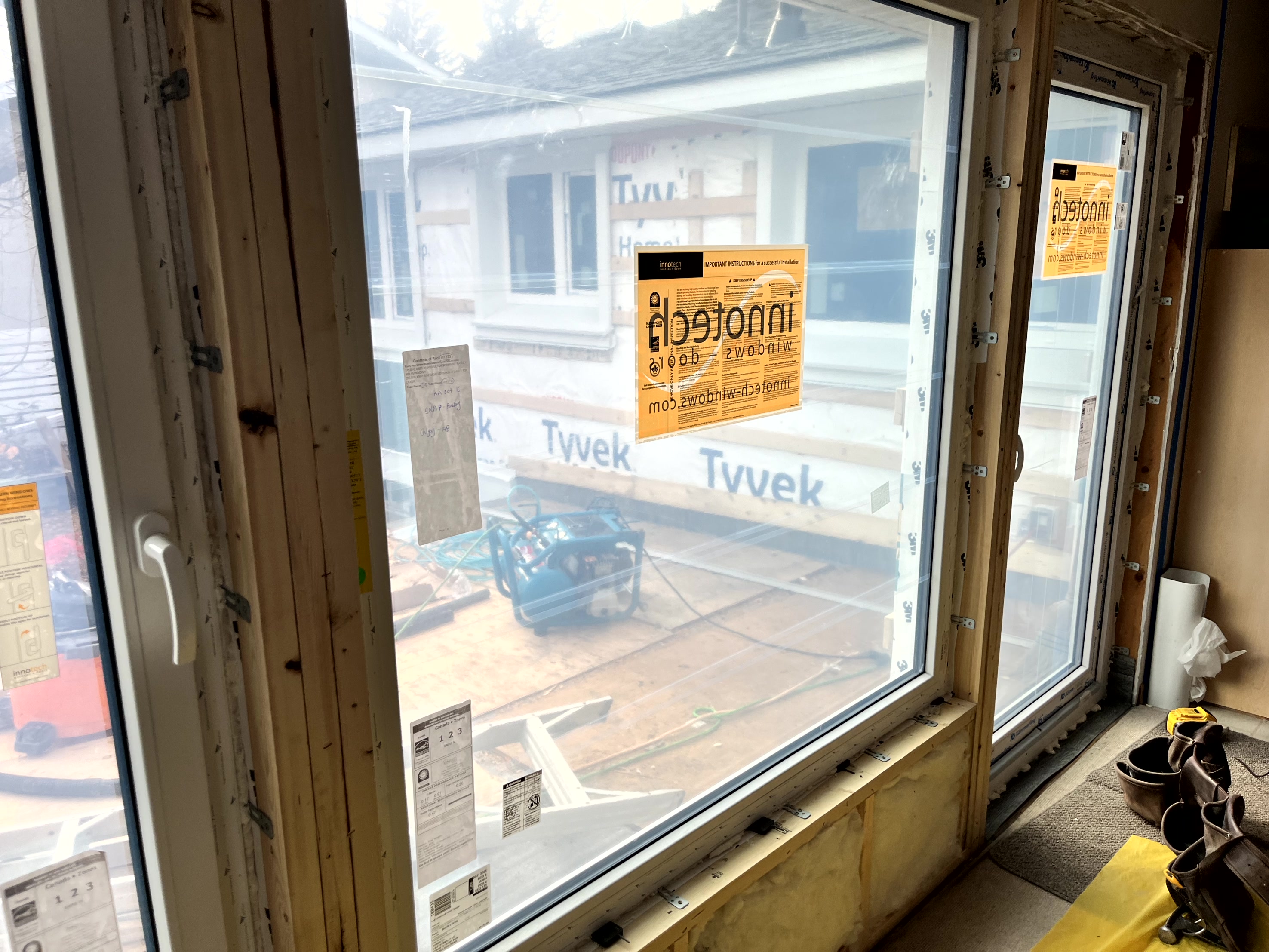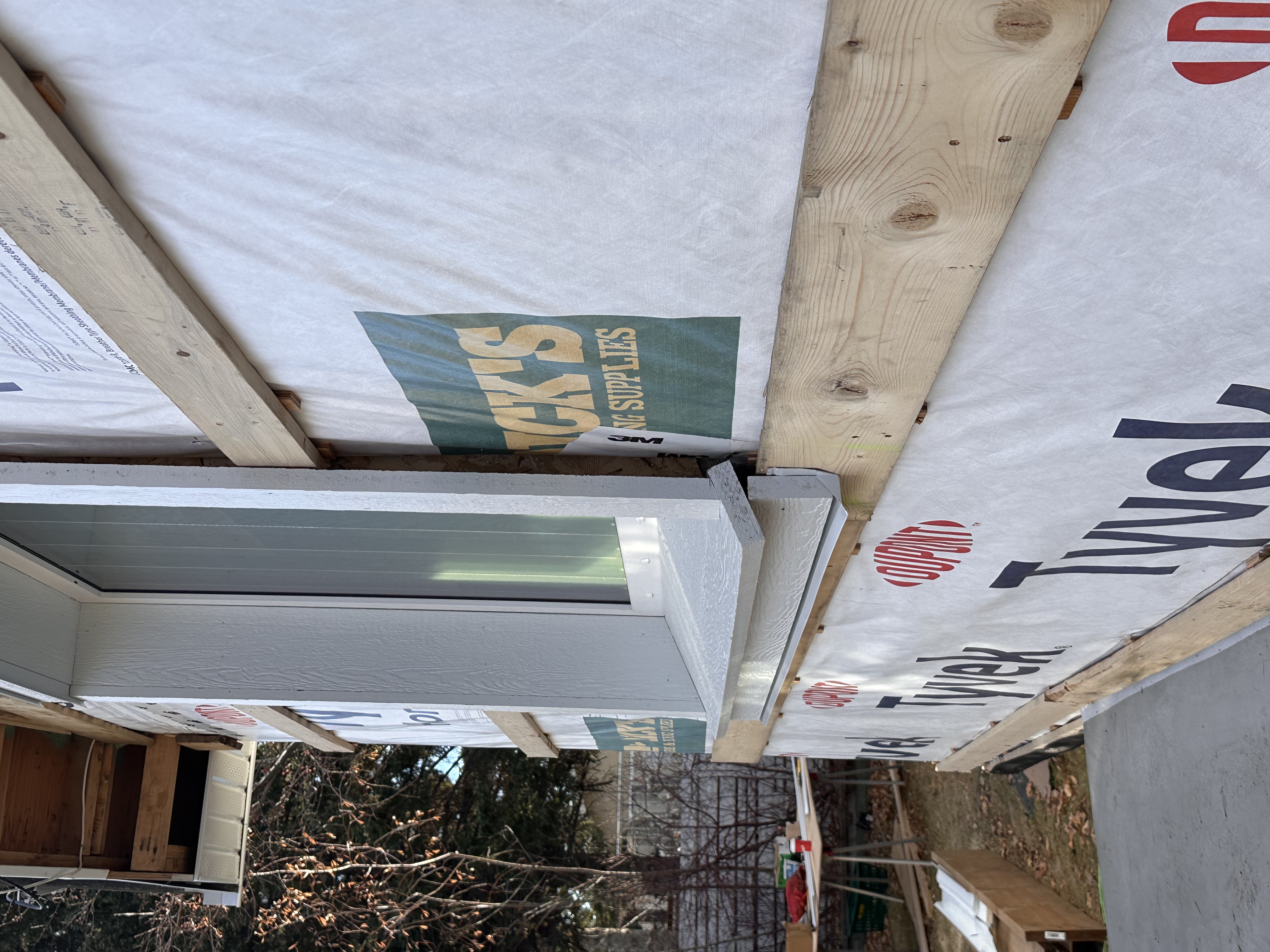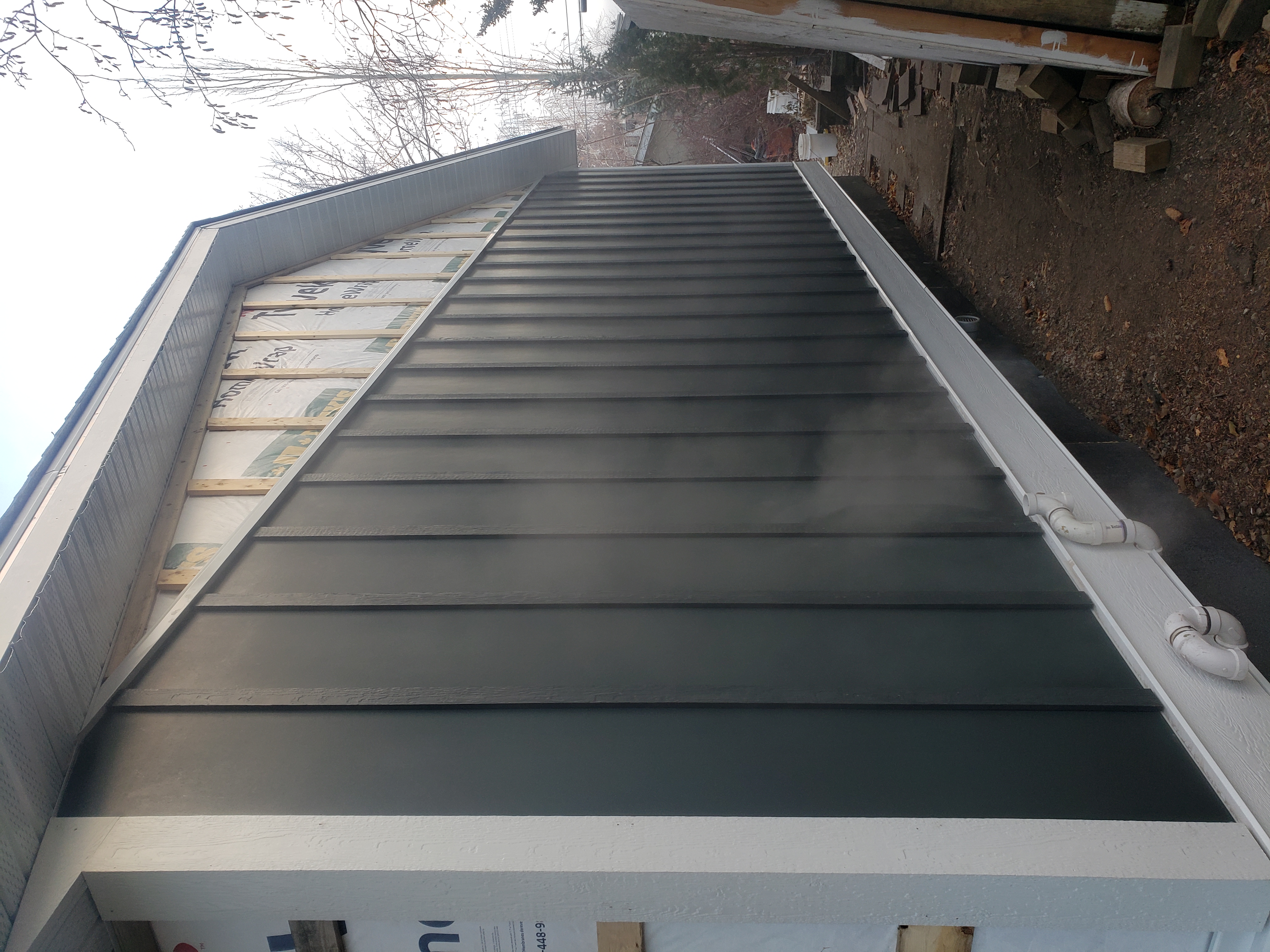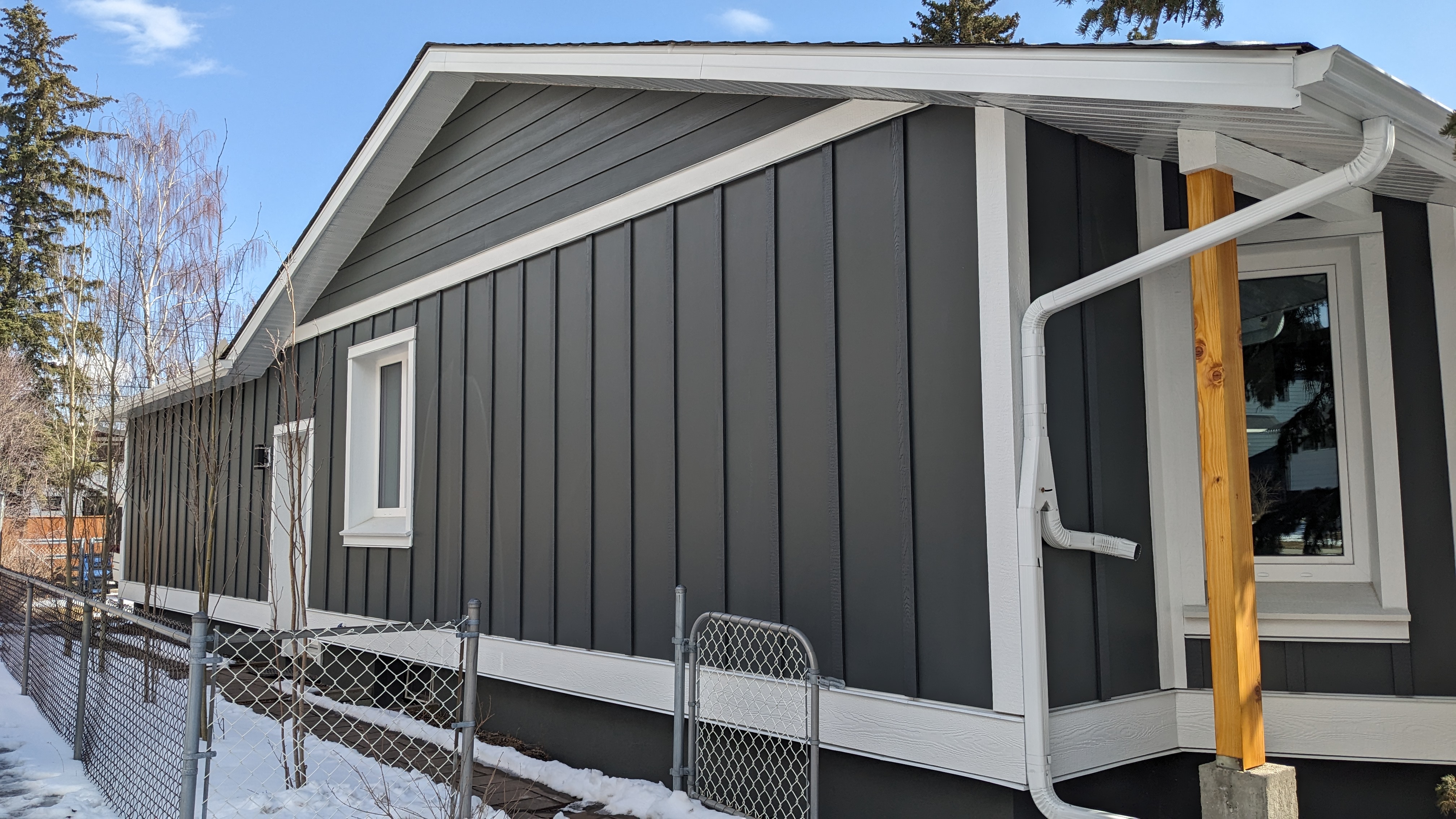New "jacket" for 1960s Bungalow
A new energy-efficient "jacket" cut this home’s energy use in half.
| Building Type | Single-Family Bungalow (incl. 1.5 Story) | Location | Calgary, AB |
| Year Built | 1968 | Foundation Type | Concrete (Crawl Space) |
| Structure Type | Wood-Framed | Total Floor Area | 189.2m2 |
| Climate Zone | 7a | Heating Degree Days | 5000 |
| Retrofit Status | Complete | Year Completed | 2024 |
| Retrofit Phasing | Yes | Geometry Changed | No |
| Annual Energy Savings | 69.42% | Operational Carbon Savings | 5.59 tCO2eq/yt |
Project Team
- SNAP Building ( Builder )
- Sol Invictus Energy Services ( Energy Advisor )
- Energuy Holdings LTD ( Energy Advisor )
Project Priorities
- Reduce Energy Consumption
- Achieve Net Zero or Net Zero Ready
- Increase Thermal Comfort
- Improve Indoor Air Quality
- Reduce GHG Emissions
- Repair and/or Renew Exterior
Upgrades
- Attic insulation top up to R-60
- Modified Larsen truss system added to exterior wall (Nominal R-35)
- Triple pane Low-E coated windows
- Upgraded Energy Star exterior doors
- Insulated crawlspace wall and slab (Nominal R-9 and R-18, respectively)
- Upgraded rim joist header insulation (Nominal R-32)
- 4″ of GPS Insulation added to upper portion of the foundation wall exterior. (Nominal R-18)
- Improved air tightness, from 5.26 to 2.61 ACH @ 50 Pa
- Heat pump domestic water heater (0.82 EF)
- Energy Recovery Ventilator (ERV)
Project Description
Planning the Retrofit
This retrofit was driven by the homeowners goal to reduce greenhouse gas emissions and improve comfort in an older, drafty home. The house had cold spots in the winter, struggled to stay cool in the summer, and had outdated windows and insulation that did not perform well.
To address these issues, the project focused on improving the home’s building envelope. The plan followed an "envelope-first" approach to boost energy efficiency and comfort while lowering emissions.
Key Upgrades Included:
- Exterior Walls: An 8" modified Larsen Truss system was added to the outside of the existing 2×4 framed walls, significantly improving insulation and reducing heat loss.
- Air Barrier: A continuous air barrier was installed to seal leaks and improve airtightness throughout the home.
- Attic Insulation: The attic insulation was topped up to reduce heat loss through the roof.
- Foundation Walls: 4" of EPS (rigid foam) insulation was applied to the exterior foundation walls.
- Crawlspace: Foam board insulation was added in the crawlspace below the addition to improve both insulation and airtightness.
- Windows: Old, inefficient windows were replaced to eliminate drafts and improve year-round comfort.
Together, these improvements wrapped the home in a new, energy-efficient "jacket," cutting down on energy use, improving comfort in every season, and helping the homeowner meet their climate-conscious goals.
Getting to Net Zero
Once solar panels are installed on this home it will be net-zero in it’s electrical use.
Once the current natural gas furnace reaches end-of-life, an Air Source heat pump can be added as the primary heat source, achieving full Net-Zero performance directly or with some additional solar panels.
Before & After
General |
Envelope |
Mechanical & Electrical |
Annual Energy Usage |
Carbon Emissions |
